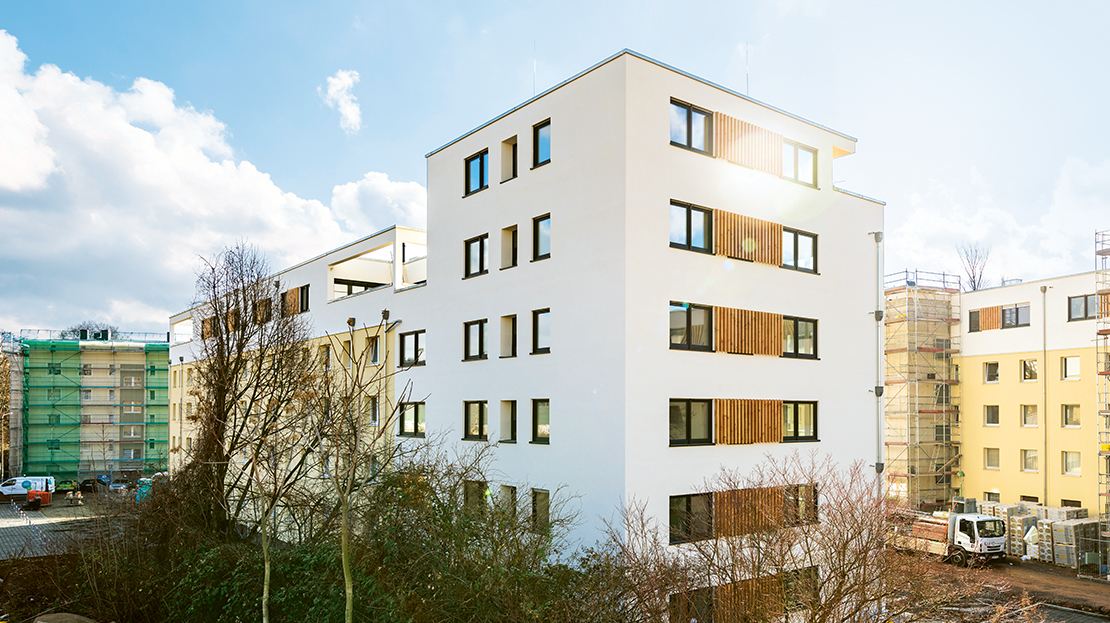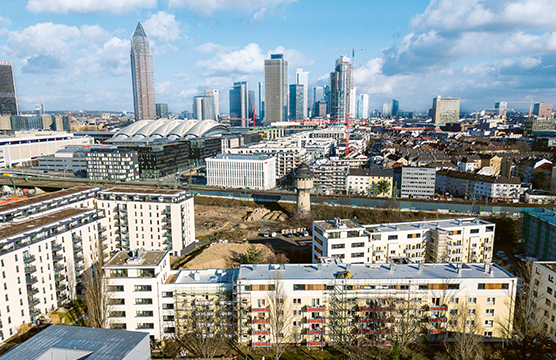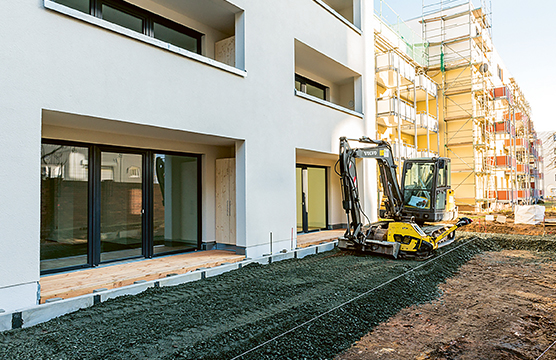Our cities are becoming increasingly attractive, but living space remains in short supply. This is an issue that we want to tackle by building new apartments designed to suit people’s needs.
Creating new living space

Germany needs up to 400,000 new apartments a year. Around 300,000 were completed in 2018. The gap is proving a problem for the country’s major cities, in particular, because their populations are growing at an above-average rate. Our modular construction concept allows us to create new, but also affordable living space, within a short space of time. We started work on the construction of 1,000 residential units last year. Once everything is running smoothly and the processes in place at the local authorities are fully up to speed, we will be able to realize more than twice as many apartments every year in the future. As things stand at the moment, we expect that we can use conventional project development to build around 12,000 new apartments in the years to come.
In order to exploit the opportunities open to us to the greatest extent possible, we are focusing on three approaches: vertical expansion, densification and project development in new areas. We use technical systems to identify potential for densification and vertical expansion in particular: These systems “scan” our portfolio for opportunities that conventional methods might have missed.
The neighborhood environment is something that we also always consider when thinking about new construction. In the current fiscal year, eleven neighborhood development projects encompassing a total of around 6,800 residential units are in the operational implementation stage across Germany. Our objective is always to achieve sustainable improvements within the neighborhoods in question.


In series, yet still individual: Modular construction provides a way to create new apartments quickly and efficiently.
Knorr district: Construction for today and tomorrow
When we want to create new living space, we think not only about the apartments themselves, but also about the surrounding infrastructure. One example is the project located on Knorrstrasse in the central Frankfurt district of Gallus, which was completed last year. As part of this project, we modernized a portfolio of 100 apartments built in 1956 and 1957, including measures to add balconies and elevators. At the same time, we also built 40 new residential units on existing open spaces using serial wooden hybrid construction. Eight of these apartments were created by adding additional stories to existing buildings. All in all, this equates to almost 3,200 square meters of new living area in a central location and at fair prices.
As far as measures to improve the neighborhood are concerned, we modernized the sewage system, laid a power line and renewed the road surface. We also created 52 car parking spaces and added green spaces. Today, the Knorr district is an attractive neighborhood for existing tenants and new customers alike, and is a flagship project that showcases innovative living space concepts. The project has inspired us to realize similar projects in other locations in the future.